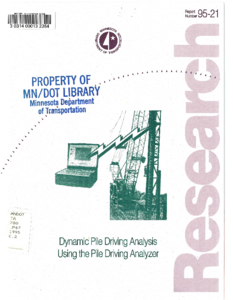Displaying results 1 - 2 of 2
Dynamic Pile Driving Analysis Using the Pile Driving Analyzer
Creator
Date Created
1995-02
Report Number
95-21
Description


